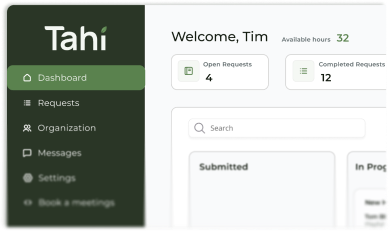Development
Webflow vs Shopify: An Honest Guide for Ambitious Brands
Webflow or Shopify for your brand? It's a huge decision. We break down the honest pros and cons to help you choose the right foundation for growth.

The Core Philosophy: A Powerful Engine vs. An Unforgettable Experience
Before we dive into the nuts and bolts, it is crucial to understand the fundamental difference in philosophy between these two platforms. It is not just a list of features; it is about their reason for being. Getting this distinction right is the key to making the right choice for your business.
Shopify was built from the ground up to do one thing exceptionally well: sell products online at scale. It is an e-commerce engine first and a website builder second. Its entire architecture is optimised for inventory management, payment processing, and streamlined checkout flows. Think of it as a high-performance warehouse and logistics system that comes with a very good storefront attached. It is built for operational efficiency and transactional velocity.
Webflow, conversely, began its life as a professional web design tool. It is a platform for creating bespoke, content-rich, and visually stunning digital experiences. Its e-commerce functionality is a powerful, integrated feature, but it exists within a larger ecosystem focused on design freedom and content management. To use an analogy, if Shopify is the warehouse, Webflow is the architect-designed flagship store. It is built for crafting a unique brand identity and telling a compelling story.
Neither approach is inherently better, but one is almost certainly better for your specific business model and ambition.
A Head-to-Head Feature Comparison
Let's get into the specifics. How do these two giants stack up in the areas that matter most to a growing brand? The answer is rarely black and white, but full of important nuances.
Design & Customisation: The Biggest Divide
This is where the difference is most stark. For us at Tahi, this is a critical factor, as we believe a strong brand experience is a powerful competitive advantage.
Webflow offers unparalleled creative freedom. As a Webflow-exclusive agency, this is the core reason we have built our practice on it. We have pixel-perfect control over every element, interaction, and animation without being constrained by a template. This allows us to build truly unique digital experiences that capture the essence of a brand and guide the user through a carefully crafted narrative. It is not just about looking good; it is about building a user journey that educates, nurtures, and converts high-value customers.
Shopify operates on a theme-based system. There are thousands of excellent themes available, both free and paid, that can get you a professional-looking store in a matter of hours. This is fantastic for speed to market. However, customisation beyond the theme's built-in options can become complex and expensive, often requiring knowledge of Shopify's proprietary Liquid templating language or hiring specialised developers. For truly ambitious brands, the risk is looking like everyone else who bought the same popular theme.
E-commerce Functionality: Where Shopify Shines
When it comes to pure, raw e-commerce power, Shopify has the edge. It has been perfecting its platform for this single purpose for over a decade.
- Product Management: Shopify is built for huge catalogues. With updates allowing for up to 2,000 product variants per item, it can handle immense complexity. Features like bulk product uploads, advanced inventory tracking across multiple locations, and automated stock management are deeply integrated and robust.
- Webflow's Approach: Webflow's e-commerce is more suited for businesses with smaller, more curated product offerings. It handles basic variants like size and colour perfectly well, but it lacks the heavy-duty automation and inventory tools needed for a business juggling thousands of SKUs. It is ideal for selling high-ticket items, digital products, or a focused collection where each product page is a rich story.
- Payments & Checkout: Both platforms are excellent here. Shopify has its own highly-rated Shopify Payments (powered by Stripe), which is seamlessly integrated. Webflow integrates directly with Stripe and PayPal. The key difference is that Webflow allows for a fully customised and branded checkout page on your own domain, which can be a significant trust signal for customers.
- Advanced Features: Shopify comes packed with out-of-the-box features like abandoned cart recovery, multi-currency selling, and complex shipping and tax calculations. Webflow can achieve much of this through powerful integrations with tools like Zapier, but it requires more setup.
Content, Marketing & SEO: A Nuanced Battle
An e-commerce site is more than just product pages. It is a marketing engine, and this is where Webflow's DNA as a content platform gives it a serious advantage.
The CMS: This is a landslide victory for Webflow. The Webflow CMS is an incredibly powerful and flexible tool for creating any kind of content you can imagine: blogs, case studies, landing pages, resource hubs, team bios, and more. It allows marketing teams to build and manage rich content experiences without needing a developer. Shopify's built-in blog is functional for basic posts, but it is nowhere near as customisable or powerful for ambitious content marketing strategies.
SEO: Both platforms are SEO powerhouses, but they excel in different areas. Shopify offers robust, e-commerce-specific SEO features and a vast app marketplace for advanced tools. It is very good at the technical basics. Webflow, however, provides granular control over every aspect of on-page SEO. From clean, semantic HTML and customisable URL structures to lightning-fast load times, it gives SEO professionals the keys to the entire kingdom. For a detailed strategy, you can check out our Webflow SEO blueprint.
The Learning Curve and True Cost of Ownership
A platform is an investment of both time and money. Here’s how they compare over the long term.
Getting Started: Speed vs. Skill
There is no contest here: Shopify is famous for its user-friendly interface. An entrepreneur with a great idea can genuinely set up a basic, functional store over a weekend. It is designed for ease of use and rapid setup.
Webflow has a steeper learning curve. It is a professional tool, much like Figma or the Adobe Creative Suite. While its visual interface is intuitive for designers and developers, it requires an investment in learning to unlock its full potential. This is precisely why most serious businesses choose to partner with an agency like Tahi Studio. We handle the technical complexity so you can focus on your business.
The True Cost of Ownership
At first glance, pricing plans might seem comparable. However, the 'true cost' often lies in the ecosystem.
Shopify's business model relies heavily on its App Store. Need advanced subscriptions? That is an app with a monthly fee. Want more powerful analytics? Another app, another fee. These costs can quickly add up, turning a seemingly affordable plan into a significant monthly expense. I've seen some clients with app bills that would make your eyes water.
Webflow's pricing is more consolidated. While you might invest in a partnership with an agency for the initial build and ongoing support (you can see our flexible pricing here), you are less likely to be nickel-and-dimed by a dozen different app subscriptions. Many advanced features can be built natively or with one-off integrations, giving you more predictable costs over time.
So, Who Wins? Choosing the Right Tool for the Job
The right platform depends entirely on your business model and your primary goals.
When Shopify is the Clear Winner:
- High-Volume E-commerce: If you are a pure-play e-commerce business with hundreds or thousands of products, Shopify's inventory and order management systems are built for you.
- Dropshipping: The deep integrations with platforms like Oberlo make Shopify the default choice for the dropshipping model.
- Maximum Speed to Market: If your top priority is to get a functional store online as quickly as possible using a pre-built theme, Shopify is the faster path.
When Webflow is the Smart Choice:
- Brand-Led Businesses: If your brand's story, aesthetic, and unique user experience are your key differentiators, Webflow gives you the canvas to build it without compromise.
- High-Ticket Items: When selling products or services that cost hundreds or thousands of dollars, the customer journey requires more education, nurturing, and trust-building. Webflow's superior content capabilities are perfect for this.
- Content-First Brands: For businesses where content (blogs, courses, resources) is the primary driver of traffic and authority, and e-commerce is the monetisation method, Webflow is the ideal platform.
My Take: You Do Not Have to Choose
Here’s the thing I tell many of our clients: in 2025, you do not always have to make a binary choice. As an ex-developer who now runs the business, my favourite projects are often the ones where we get to be creative with the solution.
For the most ambitious brands, the ultimate solution is often a hybrid one. This is often called a 'headless' approach, and it is simpler than it sounds. With incredible tools like ShopyFlow, we can combine the best of both worlds:
- Webflow on the Front-End: We design and build a stunning, fast, and content-rich website in Webflow. This gives you complete creative control over the user experience and a world-class CMS for your marketing team.
- Shopify on the Back-End: We use Shopify to handle what it does best: manage inventory, process payments securely, and handle all the complex logistics of shipping and fulfillment.
This hybrid model gives you a website that does not compromise on brand experience or e-commerce power. It is the solution for businesses that want an unforgettable flagship store powered by an industrial-grade warehouse. It is the future for ambitious brands that refuse to settle.
The Final Word
The Webflow vs. Shopify debate is not about finding a single 'best' platform. It is about understanding your own business and choosing the foundation that best supports your vision. Are you building an efficient selling machine or an immersive brand experience? Do you lead with product volume or with compelling content?
Choosing your e-commerce foundation is one of the most important decisions you will make. If you are weighing your options and wondering whether a pure Webflow build or a powerful hybrid solution is the right path for your brand, let's talk. A free, no-obligation audit of your current setup can give you the clarity you need to build for the future.







